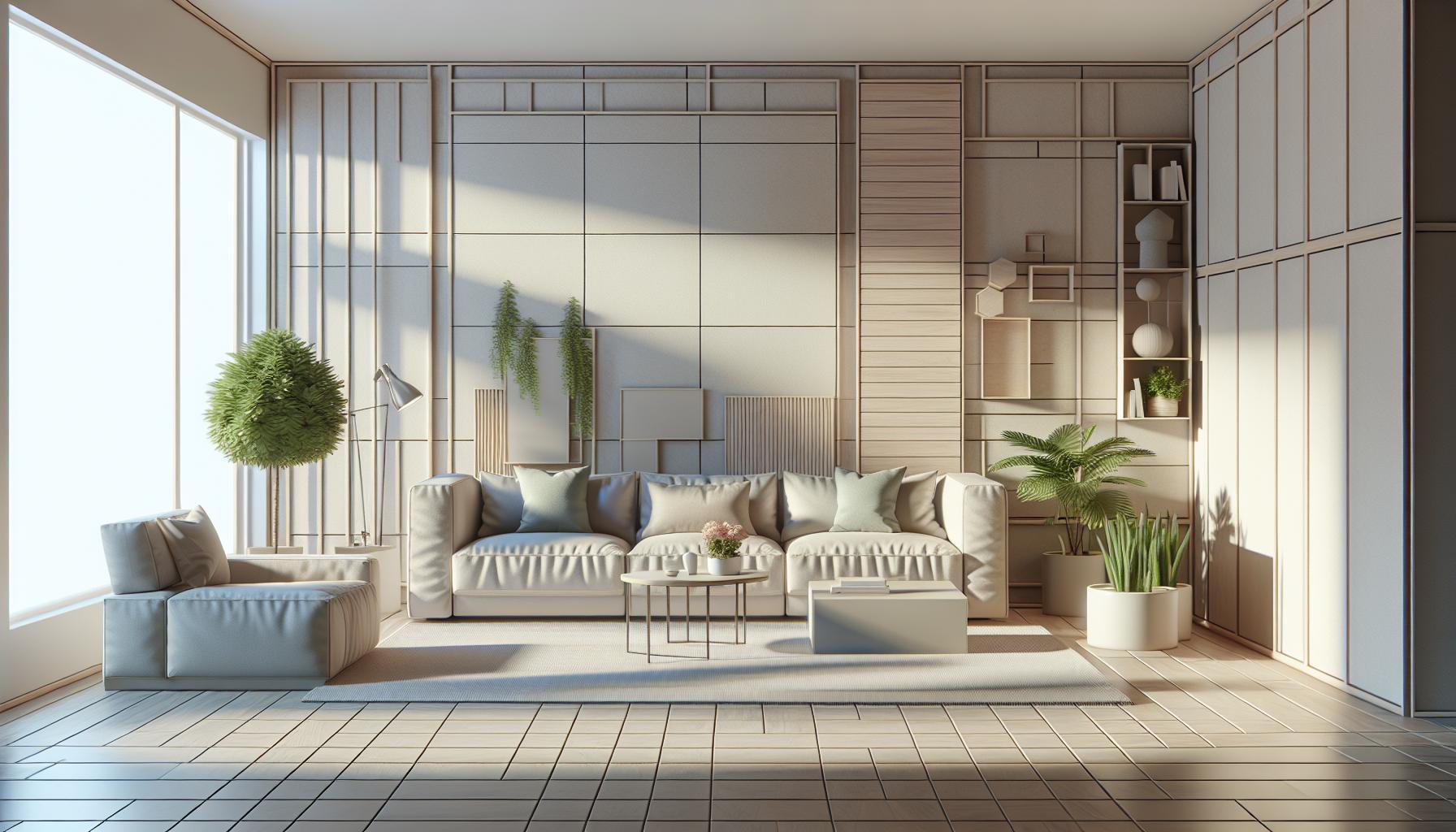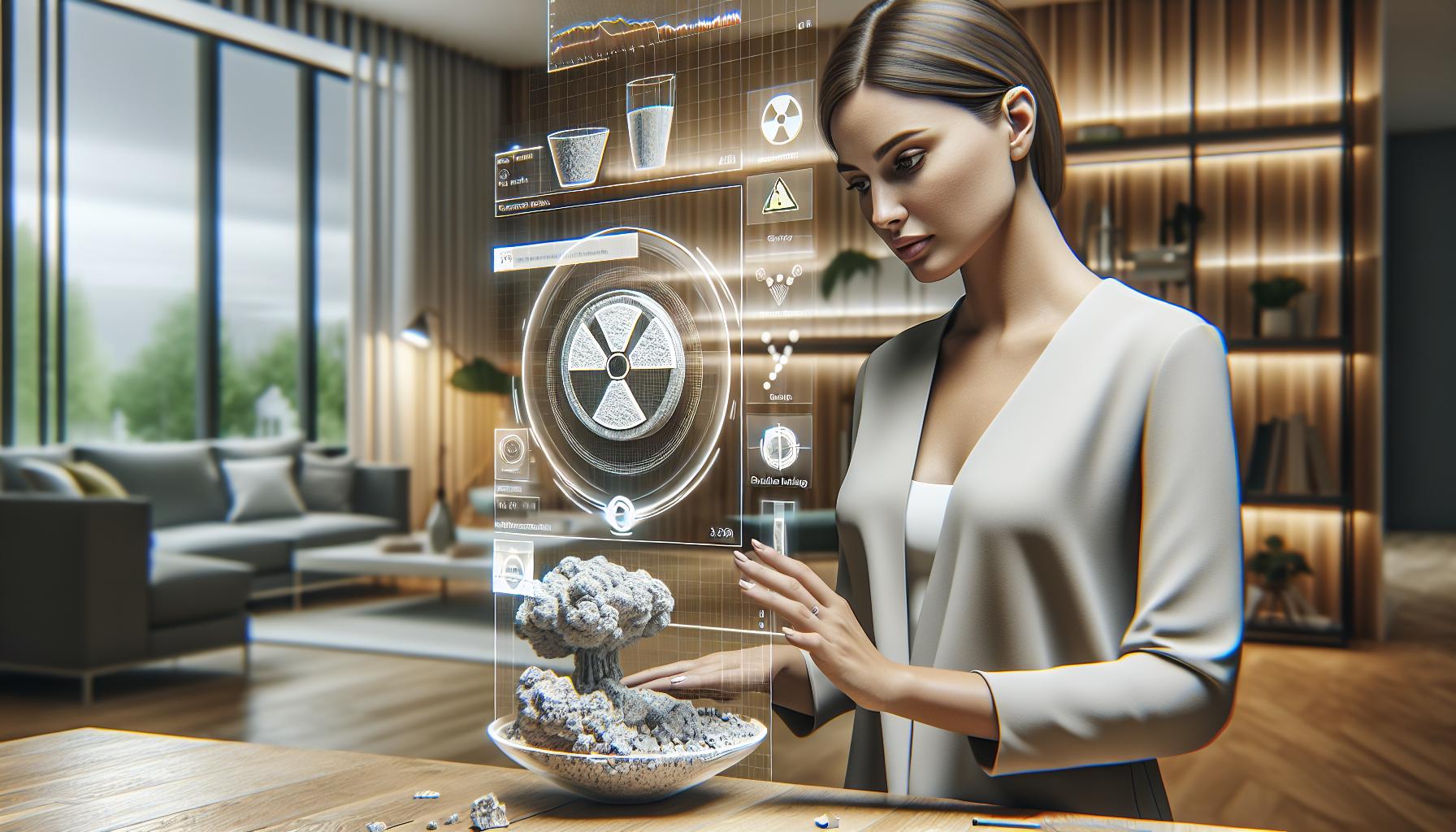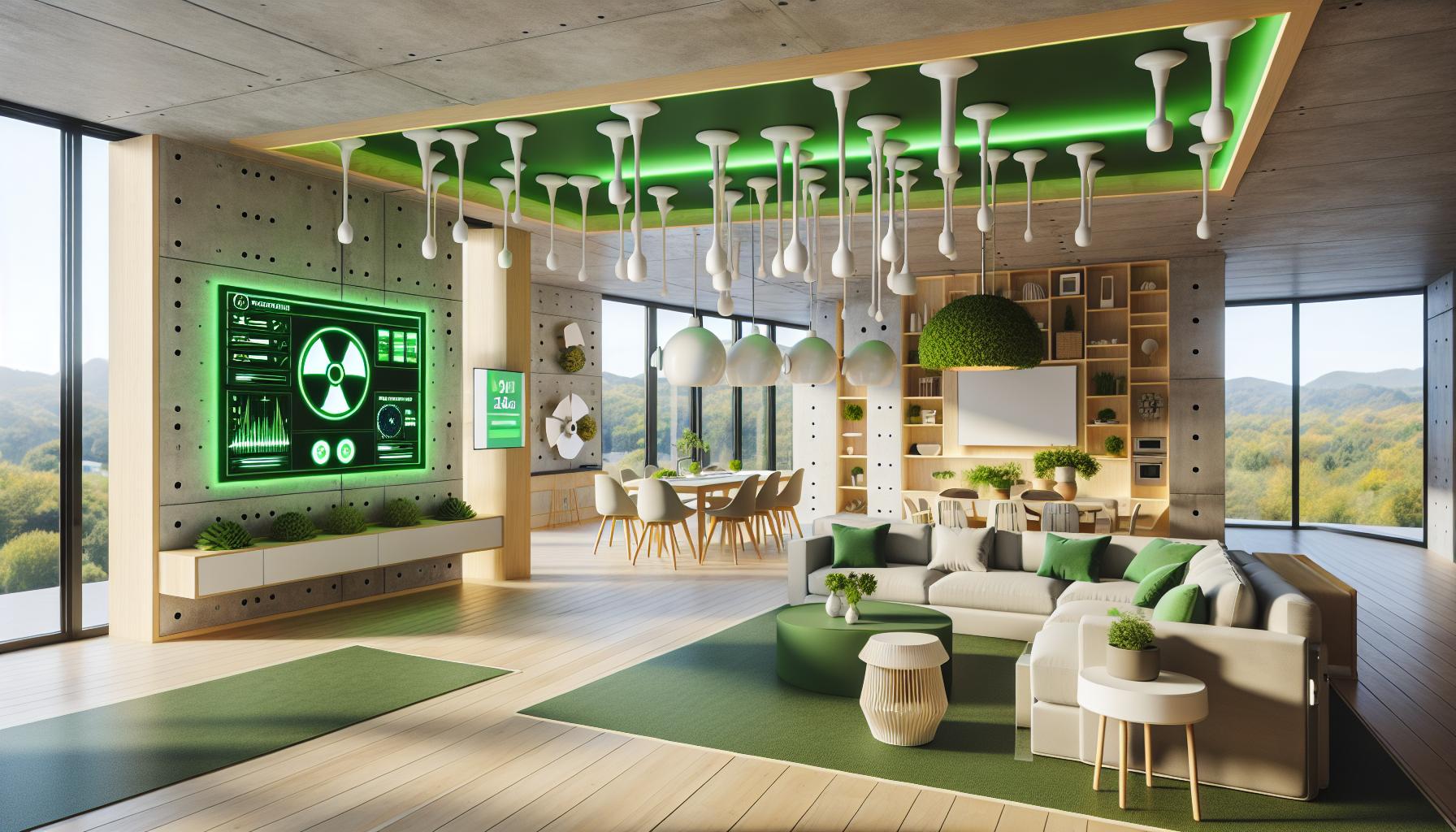
When we think about interior design, we often focus on aesthetics, comfort, and functionality. But have you ever considered the role radiation plays in shaping our living spaces? Radiation interior design is an emerging field that combines science and art to create environments that are not only visually appealing but also safe and healthy.
I’m fascinated by how this innovative approach uses materials and layouts to minimize exposure to harmful radiation, whether it’s from natural sources like radon or man-made ones like Wi-Fi signals. As we become more aware of the invisible forces around us, integrating radiation considerations into our homes and workplaces is becoming increasingly important.
In this article, we’ll explore the principles behind radiation interior design and how it can transform our spaces into havens of well-being. Whether you’re a homeowner, designer, or just curious, understanding these concepts could change the way you see your surroundings.
Key Takeaways
- Understanding Radiation Interior Design: This evolving field combines scientific principles and artistic elements to create safe, aesthetically pleasing spaces by minimizing exposure to both natural and synthetic radiation sources.
- Importance of Materials and Layout: The use of radiation-absorbing materials like gypsum and clay, along with strategic spatial layouts, plays a crucial role in reducing radiation exposure in homes and workplaces.
- Technological Integration for Safety: Advanced technologies such as radiation mapping tools and smart home systems aid in identifying and mitigating radiation risks, ensuring continuous safety monitoring in interior spaces.
- Broad Applications Across Settings: Radiation interior design principles are applied in various environments, from residential spaces to hospitals, to enhance safety and balance with aesthetic appeal.
- Challenges and Considerations: This design approach faces challenges like high costs, technical expertise requirements, aesthetic integration, and varying regulatory standards, necessitating ongoing innovation and education.
- Future Trends: Incorporating eco-friendly materials, smart home technologies, virtual reality for design simulation, and interdisciplinary collaboration are emerging trends shaping the future of radiation interior design.
Radiation Interior Design
Radiation interior design integrates scientific principles and artistic elements to create spaces that are safe from unwanted radiation exposure. I emphasize the role of materials, layout, and technology in achieving this balance. For example, selecting building materials that naturally resist radiation helps reduce the penetration of harmful elements.
Radiation sources in homes and offices vary widely. Radon gas, a natural soil byproduct, poses health risks indoors. My approach aims to minimize these dangers by incorporating materials like limestone or specific paints in the design. The design also considers synthetic radiation sources. Technology use has skyrocketed, so modern spaces must include shielding solutions like metal meshes behind walls to block excessive radiation from Wi-Fi and other gadgets.
I prioritize optimizing spatial layout. Furniture placement affects radiation exposure. I ensure limited proximity to potential sources and promote safer environments by adjusting layouts accordingly. The aim is to create functional spaces with an emphasis on well-being and comfort without compromising design aesthetics.
Incorporating advanced design tools offers distinct advantages. Using simulations and radiation mapping technology enables precise planning and hazard assessment before construction begins. I utilize these methods to predict and mitigate risks effectively, enhancing safety.
The demand for radiation-conscious design is growing. As designers become more aware of its importance, implementing these strategies requires careful planning and execution. Through an informed focus on radiation interior design, I help create environments that safeguard health while maintaining their visual appeal.
Key Principles of Radiation Interior Design

Radiation interior design focuses on harmonizing safety and aesthetics in living environments. This section delves into pivotal elements guiding this innovative discipline.
Safety Considerations
Safety in radiation interior design prioritizes reducing exposure without compromising style. My approach includes selecting low-emission materials, particularly for walls, floors, and furniture. For example, clay and gypsum efficiently block certain radiation types. I also utilize shielding techniques, such as lead-infused paint or copper mesh, in areas with higher radiation levels.
Technology plays a crucial role in safety measures. I rely on radiation mapping tools to pinpoint areas needing protection and adjust the design accordingly. Careful placement of electronics and Internet routers minimizes exposure. Smart home systems can be integrated to monitor radiation levels, ensuring a continuous safety assurance.
Aesthetic Integration
Aesthetic appeal must coexist with safety in radiation interior design. My focus is on blending functional elements, like shielding, with decor that’s visually pleasing. For instance, decorative panels can incorporate radiation-blocking materials, maintaining design cohesion.
I prioritize color schemes and textures to harmonize space elements. Natural hues and materials often remediate harsh appearances of protective components. I incorporate plants and organic textures to soften the space and promote visual and physical wellness.
Through strategic furniture arrangements, I enhance both aesthetic and safety aspects. Positioning seating away from radiation sources, like routers, improves room flow and comfort. This strategic design fosters a balanced and inviting home environment.
Materials and Technologies

In radiation interior design, materials and technologies play a pivotal role in ensuring safety while maintaining aesthetic appeal. Utilizing specific materials and cutting-edge technology can significantly reduce radiation exposure in living spaces.
Radiation-Absorbing Materials
Certain materials excel at absorbing or blocking radiation, reducing exposure in interiors. Gypsum, commonly used in walls, has properties that help limit radiation penetration. Clay, another effective material, offers both aesthetic value and protective qualities. Using lead-infused paints can provide a robust barrier against radiation without compromising design. These materials, when integrated thoughtfully, enhance both safety and visual harmony in space.
Advanced Design Technologies
Technology aids in effective radiation management within a space. Radiation mapping tools allow designers to assess and visualize radiation levels, ensuring targeted interventions. Smart home systems can monitor radiation levels in real time, enabling dynamic adjustments to maintain safety. Combining these technologies enhances precision in minimizing exposure and contributes to creating a protective and serene environment.
Applications of Radiation Interior Design

Radiation interior design has broad applications, enhancing safety and aesthetics in various settings. From homes to hospitals, its principles create healthier spaces.
Residential Spaces
In homes, radiation interior design focuses on minimizing exposure from electronic devices and natural sources like radon. I incorporate materials like gypsum and clay that absorb radiation, reducing indoor levels effectively. Shielding solutions, such as metal meshes, are strategically integrated into walls and ceilings for added protection. The spatial layout plays a crucial role, and I position furniture to mitigate exposure. By employing smart home systems and radiation mapping tools, I can monitor and manage radiation levels, ensuring a safe living environment.
Commercial and Hospital Environments
In commercial settings and hospitals, minimizing radiation exposure is paramount. I select resistant materials and incorporate lead-infused paints to enhance safety without compromising design. Advanced technology, including radiation mapping and smart systems, allows continuous monitoring of radiation levels. In hospitals, shielding techniques are essential in areas like X-ray rooms to protect patients and staff. The arrangement of equipment and furniture adheres to safety standards, reducing radiation risks while maintaining functional spaces. Through strategic application of these principles, I ensure these environments are both safe and aesthetically pleasing.
Challenges and Limitations
Radiation interior design faces several challenges. Implementing effective radiation shielding can be complex due to the diverse types and sources of radiation. For instance, natural sources like radon require different mitigation strategies compared to electromagnetic fields from electronics.
Costs represent a significant limitation. Materials such as lead-infused paints and advanced shielding technologies can be expensive, affecting project budgets and accessibility for homeowners. Balancing cost and safety without compromising aesthetic appeal remains a difficult task.
Technical expertise is another constraint. Design professionals must possess specialized knowledge to assess radiation levels accurately and implement appropriate solutions. Radiation assessments necessitate advanced tools like mapping technology, which adds complexity and demands a higher degree of skill in interpretation.
Aesthetic integration presents further challenges. While effective in reducing radiation, certain shielding materials can be visually intrusive or limit design flexibility. Designers often struggle to incorporate these measures into visually appealing spaces without detracting from contemporary or traditional aesthetics.
Finally, regulatory standards vary, impacting the uniformity of design practices. Inconsistent guidelines make it difficult for designers to maintain a standardized approach, complicating efforts to achieve consistent safety outcomes across different regions and project types. These challenges highlight the need for ongoing education and innovation in the field.
Future Trends in Radiation Interior Design
Radiation interior design evolves with technological advancements and growing public awareness. Eco-friendly materials gain popularity due to their minimal radiation emissions. Materials like hempcrete and wool offer sustainable alternatives, aligning with environmental trends.
Smart home technology integrates seamlessly with radiation management. IoT devices monitor radiation levels in real-time, providing data for dynamic design adjustments. These systems enhance safety by adapting to changing environments and supporting energy efficiency.
Virtual reality (VR) and augmented reality (AR) tools revolutionize design processes. They offer simulations that predict radiation exposure, allowing designers to create safer and more aesthetically pleasing spaces.
Adaptive design principles emerge to address diverse needs. Flexible layouts optimize space and radiation safety, responding to the unique requirements of each setting. These designs incorporate multifunctional elements, enhancing both utility and protection.
Collaboration between scientists and designers strengthens. Interdisciplinary teams create innovative solutions that prioritize health without sacrificing style. This partnership encourages ongoing research and development in radiation interior design.
Incorporating cultural preferences becomes essential. Globalization leads to diverse design influences, prompting consideration of cultural norms when applying radiation safety measures. This approach ensures solutions resonate with varied audiences while maintaining effectiveness.
Transforming Environment into Sanctuary
Embracing radiation interior design offers a pathway to creating spaces that are not only beautiful but also safe and protective. By integrating scientific insights with artistic vision, we can transform our environments into sanctuaries that shield us from harmful radiation. As technology advances and awareness grows, the potential for innovative solutions expands, paving the way for designs that harmonize safety with aesthetics. This field promises a future where our living and working spaces are intelligently crafted to enhance our well-being, ensuring that health and style coexist seamlessly.
